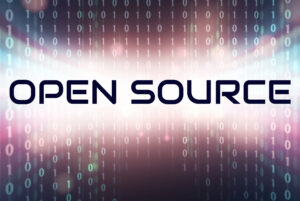A successful mobile game is rarely developed by one person. Whether you’re an indie studio with less than 5 people, or a AAA studio with hundreds, there’s a common challenge when trying to develop a game – how on earth do you deal with code being written by multiple developers, often multiple times a day? How do you ensure you’re able to rebuild the codebase and always compile the code? How do you ensure that new code doesn’t break existing features?
The answer to this is a continuous integration pipeline. Continuous integration (sometimes called continuous development) is a development practice where developers frequently merge their code changes into a shared repository. Each merge is then verified by an automated build and automated tests are run. This ensures that potential integration errors are detected early, making it easier to debug and deliver updates quickly and efficiently.
Continuous development is also sometimes implemented alongside another practice called continuous deployment (CD) which deploys the successful build and test cycle results in the game to another testing environment – although one built for QA and playtesting, always ensuring that the latest version of the game is the one being tested.
T-Plan provides advanced testing solutions that support CI practices, this enables game developers to automate their testing workflows effectively. Our tools help ensure that each build meets high-quality standards before reaching players.

Table of Contents
Why you simply can’t develop a mobile game without continuous integration in 2024
Well, technically you can, but it won’t be easy to manage and you’ll likely run into very avoidable issues.
CI provides a structured, automated approach to testing, integration and deployment and ultimately means higher quality, more stable builds and a smoother development process – and all of this translates to your game studio making more money. Without CI, expect to run into constant issues such as delayed bug detection (have fun trying to resolve major gameplay issues 24 hours before you are due to launch), integration challenges and just a more inefficient, time consuming and costly workflow.
With that being said, if you are still on the fence about integrating CI into your game studio, we’ve gone through a list of very compelling reasons as to why you should:
CI is more efficient and faster
A development process that uses CI is simply more efficient than one that doesn’t. Automated tests provide immediate feedback on code changes, enabling your developers to fix issues quickly while the context is still fresh. This rapid feedback loop is essential for maintaining high development velocity and ensuring that bugs are addressed promptly.
Continuous integration also ensures that the game is tested around the clock, leading to faster and more reliable results. Automated testing scripts can run at any time, catching issues that might be missed during regular working hours. This is a godsend if you have multiple developers working in different time zones – you never have to worry about someone on the other side of the world committing a dodgy piece of code; if they do, your CI process will catch it.
Also – by reducing the need for extensive manual testing, CI can save time and resources. Automated tests can run much faster and more frequently than manual tests, freeing up developers and testers to focus on more complex tasks that require human insight.
CI leads to improved quality
A development process that integrates CI is highly likely to result in a higher quality product. Automated tests ensure that each build meets the same quality standards, reducing the risk of introducing new bugs. Consistency in testing helps maintain a stable codebase and ensures that new features do not disrupt existing functionality.
CI allows for early detection of bugs, reducing the cost and effort of fixing issues later in the development cycle. Early bug detection is crucial in game development where later-stage bugs can be hugely expensive and time-consuming to resolve. A great example of this is the game “Cyberpunk 2077” – several delays resulted in a late 2020 release that was riddled with bugs and performance issues, particularly on older consoles such as the PS4 and Xbox One – users reported very poor AI behaviour (police, NPC routines and car driving, etc), poor optimisation and basic bugs such as clipping and physics errors. These are not something that you would expect to see in a AAA game and certainly not something that should ever have got past early-stage testing. Post-mortem analysis revealed that the game lacked sufficient automated testing during its development, meaning that many of these bugs simply weren’t identified prior to launch.
As we’ve seen from the example above, a well-tested game is more likely to perform reliably when released to players, leading to better reviews and higher retention rates. A poorly tested game ends up like Cyberpunk 2077, which for all intents and purposes might have been a resounding commercial success had its launch been smoother than it was.
CI is more scalable
You may think you as a two-man band or a small indie studio don’t need continuous integration as you’re too small for codebase variations to be an issue. Well, that may be the case now, but if your next game is a success and you need to hire 5 more developers overnight – or a critical bug or vulnerability has been identified and you need it fixed yesterday with all the resource you can afford – your previously manageable process now becomes unmanageable without some sort of CI pipeline.
CI is able to scale with the project, handling larger teams and more complex codebases effectively and efficiently. If you have no CI pipeline, you’ll likely have to integrate one at the worst possible time for your business (when you’re extremely busy) – and it will be rushed, will cost you more and likely won’t be tailored to your business and development needs.
CI helps with risk and reputation management
The risk and reputation management side of CI is something that is often overlooked but is crucial. This goes back to our point about keeping the codebase stable by integrating and testing code changes regularly. If a code change causes instability, it’s easy to pinpoint exactly what piece of code caused the instability, as opposed to having to sift through thousands of lines of code to find the root cause.
The reason this is important for reputation management is that if you have a hyped-up release on the horizon and you decide to release a public alpha or beta, and your codebase is unstable because of multiple shaky commits that a CI pipeline would have picked up and alerted you to, this is often enough to stop the project dead in its tracks. A good example of this is the 2010 game “APB: All Points Bulletin”. The unstable beta of this game and subsequent bug-filled full release led to overwhelmingly negative reviews from players and critics and effectively killed the project.
If you take nothing else from this article, it’s that players and critics rarely change their mind, and they rarely forget – and if you leave a bad taste in their mouth, it could be the end of your project (or even your studio – Realtime Worlds, the developer of APB, went into extreme financial difficulties following the full release and closed up shop just a few months later).
CI facilitates better collaboration
CI fosters significantly better collaboration between team members by encouraging frequent integration of code. What this means in practice is that developers regularly incorporate and test each other’s changes, reducing the risk of conflicts. CI does more than prevent an unstable release from going out – it promotes a culture of shared responsibility for the codebase, as automated tests and builds immediately highlight issues and allow for quick resolution.
Additionally, CI can enhance communication through integrated tools that keep the team informed about the project’s status, providing continuous feedback on code changes. By creating a unified workflow and supporting agile practices, CI ensures that your team remains aligned, informed and working towards a common goal.
How to set up continuous integration for game development
Choosing a CI tool/platform
Firstly you are going to want to choose an appropriate CI tool or platform to automate the test and build processes. There are a number of tools out there on the market – some of which you might pay for and some which you won’t. For example, one of the most popular is Jenkins, which is an open-source automation server and provides a high degree of flexibility with its extensive plugin support. This makes it ideal for automating game builds when new code is committed.
However, Jenkins isn’t the only tool on the market – Unity Cloud Build is a great choice for managing the CI setup for Unity builds by managing licensing issues and automating multi-platform builds. Codemagic is also especially useful for Unity projects, as it provides macOS build hosts and addresses specific game build requirements. Other notable tools you may want to explore include GitHub Actions, CircleCI, Travis CI, GitLab CI/CD – it doesn’t really matter what you choose as long as it’s aligned with your project goals and meets your business and development needs.
Version Control
Version control is the backbone of any good continuous integration pipeline. Using a good VCS like Git hosted on a platform such as GitHub, GitLab or Bitbucket, your developers contribute to a structured repository for all game assets and code. These platforms also provide tools and integrations for you to simplify your CI setup.
After you’ve chosen your VCS, you create a new repository for your game project, setting up a clear directory structure to organise source code, assets, scripts and documentation. Take particular care to set up a .gitignore file to specify which files and directories shouldn’t be tracked, such as temporary files, local configuration settings and build artifacts.
Establishing a branching strategy is also something you will want to look into – use a main branch for stable, production-ready code, alongside feature branches – separate branches for new features, bugfixes or experimental work. Name these branches appropriately – e.g. ‘feature/new-ui’ or ‘bugfix/crash-issue’. Use pull requests (or merge requests) to merge changes from feature branches into the main branch. This makes sure that code review and automated testing take place before integration.
Then, link your repository to your chosen CI tool and configure webhooks to trigger CI pipelines on events like commits, pull requests and branch merges.
Defining build scripts and automated testing
Build scripts should fetch the latest code from the VCS repository, typically using Git commands like “git pull” and check out the correct branch. They should then identify and install all necessary dependencies, such as game engines, libraries and SDKs, using package managers like “npm” or “pip”. The scripts must also set up the build environment, including configurations and environment variables. The compilation process involves converting source code into executable binaries, with error handling to capture and report issues. After compilation, the build outputs, such as executable files and assets, should be packaged appropriately, including creating zip files or installers for different platforms, and storing build artifacts in a designated location.
Automated testing helps you catch issues early. Unit tests verify the functionality of individual components using frameworks like NUnit for C#, or pytest for Python. These tests should run automatically with each commit, with results reported to developers. Integration tests check the interactions between game components, and performance tests evaluate metrics such as frame rate and load time to ensure the game meets performance benchmarks. Robust build scripts and automated testing in the CI pipeline ensure consistent builds and high code quality, streamlining development and enhancing collaboration, leading to a more stable and higher quality product.
Continuous builds
Configuring continuous builds in the CI pipeline is crucial for maintaining a consistent and up-to-date development process. The CI system should be set to trigger builds automatically on every code commit or pull request, ensuring that any new changes are immediately integrated and tested.
This allows for early detection of integration issues and provides immediate feedback to developers. Additionally, scheduled builds, such as nightly builds, can be configured to run at regular intervals. These scheduled builds ensure that even less frequent changes or long-running branches are regularly integrated and tested, maintaining overall codebase stability.
By automating the build process, continuous builds ensure that the game is always in a buildable state, reducing the risk of integration problems and ensuring that new features and fixes are consistently tested.
Notifications and reporting
Effective communication is key in a CI pipeline, and setting up notifications and reporting helps keep the development team informed about the build status. Configuring notifications for both build successes and failures ensures that the team is immediately aware of the current state of the project.
These notifications can be sent via email, Slack, Teams or other communication tools, providing timely updates. Detailed reports on test results and build status should be generated and shared with the team. These reports help developers understand what went wrong in case of failures, including specific errors and failed tests.
By keeping the team informed through notifications and detailed reporting, the CI system fosters a proactive approach to addressing issues, improving overall code quality and collaboration.
Deployment, monitoring and documentation
Automating the deployment process to testing or staging environments is essential for streamlining the release cycle and ensuring consistency. Deployment scripts should be created to automate the process of moving builds to these environments, ensuring that each deployment step is consistent and repeatable.
This reduces the risk of human error and ensures that the environments closely mimic production settings. Monitoring the CI system regularly is crucial to ensure it runs smoothly. Checking build and test logs for errors helps identify and resolve issues promptly. Updating build scripts and CI configuration as needed keeps the system optimized for the project’s evolving needs.
Additionally, scaling the CI infrastructure to handle increased load ensures that the system remains efficient even as the project grows. Proper documentation of the CI processes, scripts, and configurations is vital for maintaining the system and onboarding new team members. By focusing on deployment automation, continuous monitoring, and thorough documentation, the CI pipeline ensures a reliable, efficient, and well-documented development process.
Best Practices for CI in Game Development
Automate Everything
Automation is the cornerstone of an effective CI pipeline. Here are some of the best practices to ensure comprehensive automation in game development:
- Automate Builds and Tests: Ensure that every code change trigger automated builds and tests to maintain a high level of code quality and integration. Automated builds should cover all supported platforms and configurations to catch any platform-specific issues early.
- Use Automated Deployment: Automate the deployment process to streamline releases and ensure consistency across different environments. Automated deployments help reduce human errors and speed up the release cycle, making it easier to push updates and patches to players.
Monitor and Maintain CI Pipelines
Continuous monitoring and maintenance is also crucial for keeping CI pipelines efficient and effective:
- Continuous Monitoring: Regularly monitor CI pipelines to detect and resolve issues promptly. Implement dashboards and alerts to keep the team informed of the CI pipeline status. This proactive approach helps in quickly identifying and addressing bottlenecks or failures.
- Regular Updates: Keep CI tools and dependencies up to date to leverage the latest features and security improvements. Regular updates ensure that your CI infrastructure remains robust and capable of handling new challenges as the project evolves.
Collaborate and Communicate
Last but not least, effective collaboration and communication among team members is essential for a successful CI implementation:
- Cross-Functional Collaboration: Ensure that developers, testers, and operations teams work closely together to maintain the CI pipeline, enhancing communication and collaboration. A collaborative approach helps in aligning the team’s efforts and achieving common goals.
- Clear Documentation: Maintain clear and comprehensive documentation of the CI setup and processes to ensure that all team members are on the same page. Documentation serves as a valuable resource for onboarding new team members and troubleshooting issues.
Conclusion
Continuous Integration (CI) is essential for modern game development, offering numerous benefits such as improved efficiency, speed, and quality. By automating builds, tests, and deployments, CI helps in early bug detection, maintaining stale builds, and facilitating rapid delivery of new features.
Adopting CI practices in game development is crucial for staying competitive and delivering high-quality games. While there are challenges in setting up and maintaining CI pipelines, following best practices and leveraging the right tools can significantly mitigate these challenges. T-Plan’s automation solutions can seamlessly integrate into your CI workflows, providing robust testing capabilities that ensure your game meets the highest standard of quality.
By embracing CI and incorporating comprehensive testing solutions, game development teams can enhance their productivity, reduce time to market, and deliver exceptional gaming experiences to their players.


